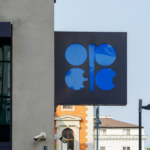And indeed, that confidence led to the busiest start of a year for IPOs since the boom of 2020 and 2021. To be sure, after an initial burst of exuberance, March and April were rocky: A gale of macroeconomic forces—including tariffs and persistently high inflation and interest rates—led the pipeline to dry up as some firms put IPO plans on ice.
Analysts and investors are optimistic that IPOs will remain strong into the fourth quarter, following a typical period of quiet through Labor Day.
Many analysts now view the current market conditions as a return to form, and expect 2025 to be the best year for IPOs since 2021, another step in the slow and steady climb back to pre-COVID levels of activity. And that could provide plenty of opportunities for discerning investors.
Others that listed in the first quarter have, of course, demonstrated less stellar post-offering performance. Still, analysts like what they see.
Gerring notes that activity is nowhere near 2021 levels. That was a record-breaking year that preceded a sharp contraction—total U.S. IPOs fell from 908 that year to just 149 in 2022, according to S&P Global. There was historically low activity from 2022 to 2024—and that’s a good thing, in Gerring’s book. Instead of a repeat of a cycle of over-exuberance followed by a prolonged hangover, she sees the IPO market recalibrating to pre-2020 levels, though she adds it will take time to get there.
“We’re not discouraged at all by the numbers and volumes that we’re seeing,” Gerring says, especially given that “there’s something occurring almost every quarter that companies have to navigate, that kind of shocks the system.”
One major difference between 2021 and now, says Mike Bellin, deals partner at PwC and leader of its U.S. IPO practice, is that companies coming to market this year are larger, have stronger growth fundamentals, and are more often profitable or on a path to profitability. That in turn can help performance not only at the IPO but after, which is what investors are looking for.
“There’s a deeper pipeline of quality companies. But there are a lot of known unknowns.”
“There’s momentum in the market,” says Bellin, which in turn “opens the door further for some of the smaller, midcap-type companies that are in process and in the pipeline.”
Another encouraging feature of the current environment is that companies across sectors are preparing for their IPOs. Technology and health care companies are leading the way this year, but firms from the realms of fintech, energy, and defense are also moving to go public.
“There’s a deep pipeline of quality companies that are looking at the capital markets,” Bellin says. “But there are a lot of known unknowns still in the market. I’ll say the door’s open for the IPO market in the second half of ’25, but it’s not wide open.”
For the average retail investor, IPOs don’t necessarily represent buying opportunities; because of lockup periods and other restrictions, it can be nearly impossible for outsiders to invest before companies’ debuts, making any first-day pop in price moot for all but insiders and venture capitalists. Initial trading days can be extremely volatile, which won’t appeal to long-term investors. And of course, a newly public stock can always tank.
Concerns about the broader economy also affect the IPO market. Uncertainty is the overarching condition of 2025, the result in part of President Trump’s evolving and often unpredictable policy preferences, the acceleration of AI, and geopolitical conflict in many parts of the world. Macroeconomic conditions are on every analyst’s mind.
“The trade policy, if that starts to take a turn for the worse, that will ultimately shut down the IPO market,” says Bellin. On the other hand, he says, “If we do continue to get good readouts from a macro perspective and limited geopolitical disruption, the capital markets will be an exciting place to be and to watch.
Chime Financial is a fintech that provides banking services to lower-income U.S. consumers, in part through its mobile app, though it isn’t a bank itself. It went public in June at an $11.6 billion valuation. While that’s less than half of the $25 billion private market Chime boasted in 2021, analysts generally believe the company is in better shape than it was back then: Chime is now profitable, with 8.6 million active users. It has been criticized for its failure to diversify its finances. Much of Chime’s revenue comes from interchange, the fee merchants pay when consumers use a Chime-issued debit or credit card. And it has lots of competition from rivals that are banks or fintechs offering similar services. —Luisa Beltran
Bear case: Chime fails to expand its revenues beyond interchange, and its share price drops below its $27 IPO level.
Crypto may be known for extreme price swings, as investors leap in and out of assets like Bitcoin and Shiba Inu. But there’s an increasingly popular option for those who want exposure to the sector without buying actual cryptocurrencies: Circle, a stablecoin company that issues a dollar-backed cryptocurrency, USD Coin (USDC). Ahead of its June IPO, analysts warned that Circle’s core business—earning revenue off the interest from the assets backing USDC—did not offer much upside. But since then, the stock has behaved more like a cryptocurrency, with wild fluctuations including the biggest two-day pop of any major stock since 1980. —Leo Schwartz
Bull case: Circle benefits from a broader crypto boom and thawing regulatory outlook, as more companies push into stablecoin adoption.
Bear case: Circle’s share price continues to drop back to earth, and the company continues to struggle with the same revenue-stream questions.
Bull case: Buying Core Scientific helps de-risk CoreWeave, and its financials improve.
Bear case: AI adoption slows, and CoreWeave topples under its heavy debt load.
When eToro went public in May, investors saw the trading platform’s performance as a harbinger of whether the fintech IPO window would open back up. Its share price popped—and the window opened—but that doesn’t necessarily make eToro a good investment. As a competitor to Robinhood, eToro offers an app-driven next generation alternative to stodgier brokerages like Schwab, providing experimental products like copy trading, where customers can mimic the investing behavior of other users, as well as an array of crypto assets.
Bull case: eToro can ride the wave of interest in retail trading of riskier—and higher-upside—assets like crypto.
Bear case: The platform fails to gain traction against larger rivals like Robinhood or well-heeled incumbents.









